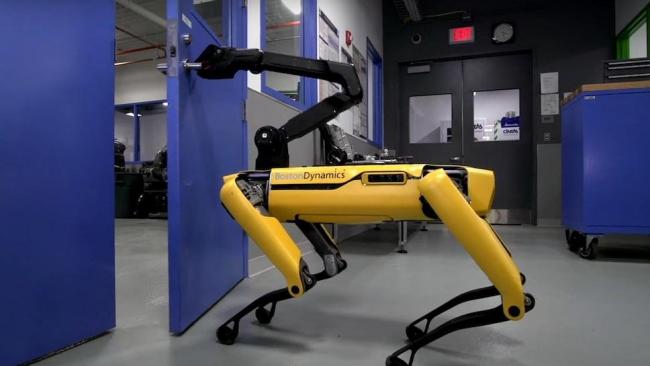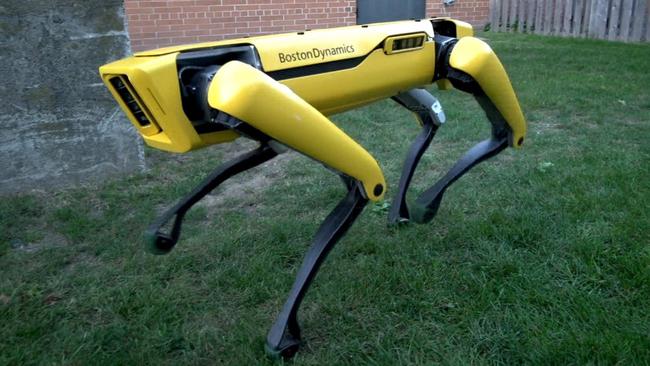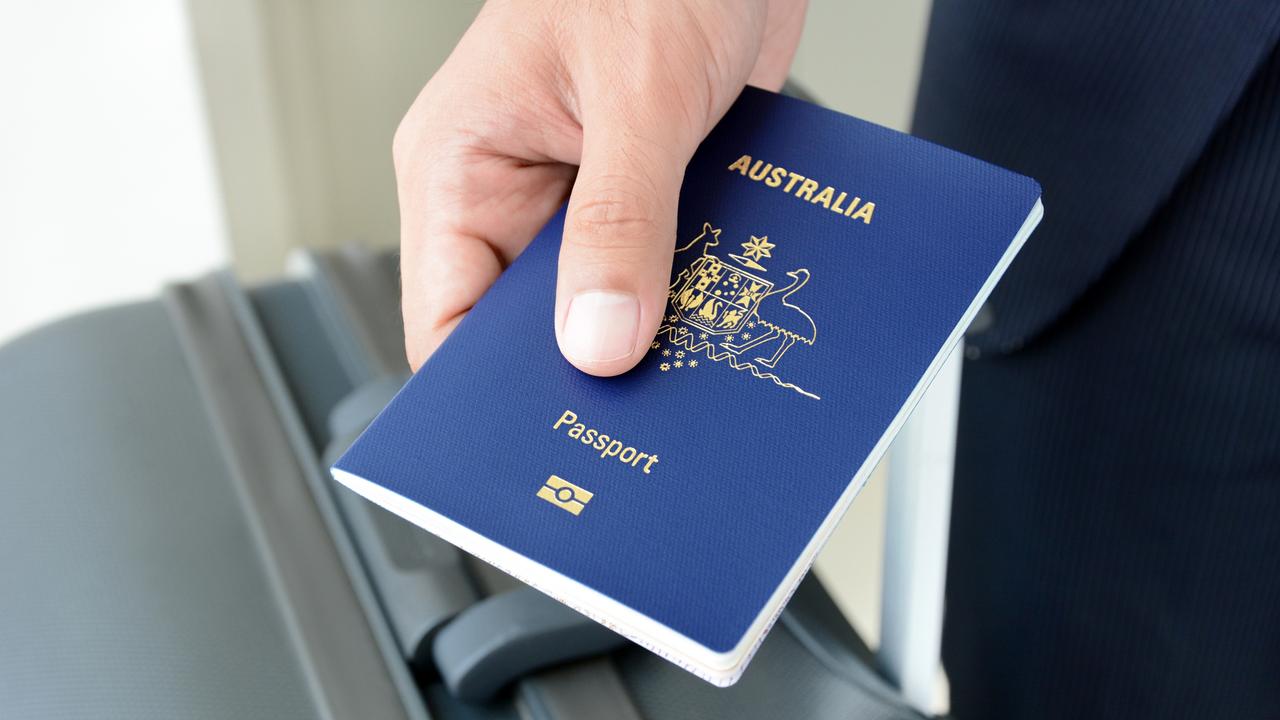US company reveals its robot dog with a new trick — it opens doors by itself
Meet SpotMini, the robot dog that’s been taught a new trick — it opens doors by itself.

READING LEVEL: GREEN
Meet the robot dog that has a new trick — it can open doors.
The latest SpotMini robot by US company Boston Dynamics can use its extendable* neck-arm to form a pincer* grip, turn the door handle, hold the door open with its paw before allowing another robot and itself to walk through a doorway.

We first saw the bright yellow, four-legged canine* machine last year, when Boston Dynamics showed off man’s best robot friend putting away dishes and sorting recycling.
In 2016, British futurologist* Dr Ian Pearson, who has created 1800 inventions, predicted that domestic robots would be doing most of our household chores by 2050.
He said: “The more advanced technology becomes, the more we can focus on being human.
“People won’t need to work as much. We’ll have a nicer lifestyle with more time for relaxation.”

Elon Musk, whose SpaceX company has just launched a car into space on a rocket, recently said robots like SpotMini are just the start of things to come — claiming the newest inventions are “nothing” compared to what we’ll see next”.
“This is nothing,” Musk tweeted. “In a few years, that bot will move so fast you’ll need a strobe light* to see it.”
GLOSSARY
extendable: made longer
pincer: similar to the grip by a crab with claws
canine: a dog
futurologist: a person whose job specialises in predicting the future
strobe light: a device used to produce regular flashes of light.
LISTEN TO TODAY’S STORY
CLASSROOM ACTIVITIES
1. How Robotics Work
Watch the video carefully. Do you know how robots like SpotMini work? Find out more about robotics. Use your ideas and information you have found to write a paragraph or report about The Way Robotics Work.
Time: allow 60 minutes.
Extension: In the story, you have read that some people believe that robots will be doing lots of different jobs in our everyday lives. Design a robot that could do at least one everyday thing in your classroom or at your school. Draw up your design and write a description of what the robot will do and how it will do it. Don’t forget to include labels for the different working parts of your robot. These will help people to understand exactly how your robot will work.
Time: allow 45 minutes.
Curriculum Links: Science.
2. Lots of robots
Think about robotic characters that you have seen in books, movies or TV shows. List as many as you can think of. Divide your list into good robots and bad robots. List anything that you think the robots have in common. Think about why robots are often bad characters and write sentences explaining your ideas. Which type of robots do you like best? Give reasons for your answer.
Time: allow 25 minutes.
Extension: Think about the type of robot character that you said that you linked best in Activity 2. Use your ideas to design and create a new robot character. Write a storyline for a movie or create a story board for an animation about your new robot character.
Time: allow 60 minutes.
Curriculum Links: Media Arts, English.
VCOP ACTIVITY
Verb adventures
With a partner see if you can you identify all the doing words/verbs in this text? Highlight them in yellow and then make a list of them all down your page. Now see if you and your partner can come up with a synonym for the chosen verb- make sure it still makes the context it was taken from.
Try and see if you can replace some of the original verbs with your synonyms and discuss if any are better and why.
Curriculum Links: English, Big Write and VCOP
IN ONE SENTENCE, TELL US WHAT YOU LIKE ABOUT TODAY’S STORY
Please don’t use one-word answers. Explain exactly what you enjoyed about the article.

